| 1 | Australia’s third longest snake |
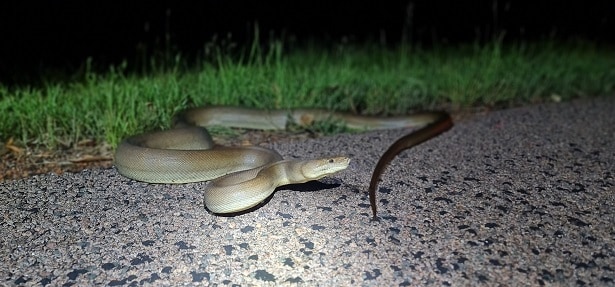
Australia has at least 14 independent python species, some in the suburbs of Sydney, others in humid Queensland jungles. The olive python is a species of Australia’s dry north, including in Northern Territory, northern Western Australia, and western Queensland.
Olive pythons are easily recognisable, as they almost always lack patterns, with a consistently smooth olive colour. Their main physical feature is their length, as this is one of the 10 longest snake species on the planet. Olive pythons average at 2.5 metres, reach 3 metres with ease, and snakes over 4 metres are reliably confirmed. Their weight ranges from 22 to 44 pounds. Luckily for everyone, this giant snake is mild mannered, and rarely attacks humans.
Olive pythons avoid true deserts, but inhabit dry rocky grasslands, savannah areas, and lakes near crumbling cliffs. They have a particular liking for rocky gorges, and are usually found close to waterholes. Beware, as caves can also hold resting olive pythons, which won’t appreciate being disturbed.
Being so large, olive pythons have an ability that other pythons are bitterly jealous of – the ability to swallow crocodiles.
| 2 | Crocodile/python faceoff, 2014 |
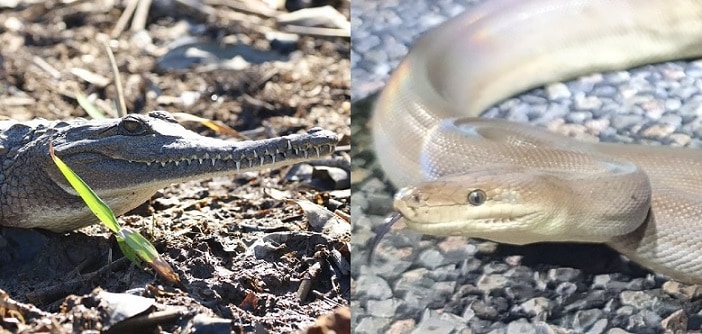
The fact that snakes can eat crocodiles was revealed to the world by one Earth shaking battle, which was filmed in 2014. The contestants were an olive python and a freshwater crocodile, the latter being a juvenile. The infamous battle took place at Lake Moondarra, near Mount Isa, a common spot for both species.
At some point, the olive python must have leapt out of the lake in ambush, but when tourists first took notice, the serpent was coiled around the crocodile in a death grip. The snake squeezed and squeezed, while the crocodile barely moved. If the croc twisted its jaws around and delivered a hard snap, it would have been devastating, but the python’s coils were expertly applied.
Rather than a remote spot, the battle took place in full view of relaxing day trippers. In a grotesque mixture of scales and jaws and legs and coils, there was no doubt what the two creatures were. Specifically, it was a freshwater crocodile, which are abundant in the inland rivers of Queensland, while saltwater crocodiles only reach a few miles inland from the sea.
Eventually, the olive python disengaged. It probed around, and began to swallow the crocodile whole, starting at the head. It took 5 hours for the olive python to stretch its entire jaws around the defeated crocodile. Crocodiles can go a phenomenally long time without oxygen, so it’s likely that the python squeezed its chest so tightly that its heart had no room to beat, thus causing cardiac arrest. As snakes regularly eat meals over 75% or even 100% of their body weight, the battle wasn’t as unusual as it seemed. It didn’t stop onlookers from being horrified.
| 3 | Smooth, worm-like skin |
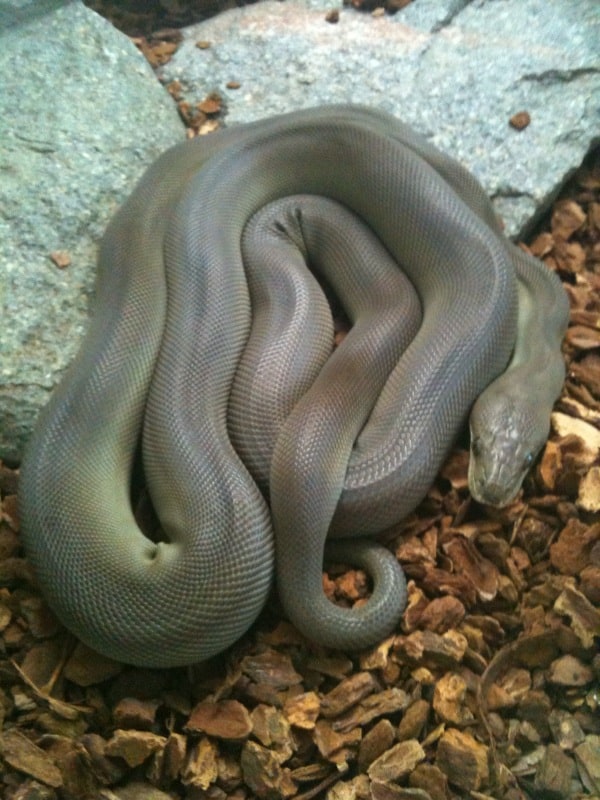
Apart from its vast length, another feature of olive pythons is how smooth they look. Rather than sharp and keeled, their body looks supple and sinuous, which combined with their smooth olive patterns, makes them look almost like a giant worm. These is because olive pythons have an extremely large number of scales, with 61-72 rows of dorsal scales, versus 35 to 45 for a carpet python. Their belly also has a large number of scales, at 355-377.
Olive pythons have fairly loose skin, and when they coil up you can see it crinkle at the edges. This is a python of medium thickness for its size, not matching a blood python for bulk, but easily outstripping the stick thin oenpelli python.
Olive pythons have round black eyes, and a blackish tongue with blue tinges. While they appear uniform in colour, there’s a few subtle darker stripes when viewed up close. Likewise, each individual scale has a slight darker edging. Nevertheless, this isn’t a deceiver snake like the Kirtland’s snake, which suddenly sprouts amazing patterns when you get up close. Living against rocks and in dry savannahs, being plain is completely to their advantage.
| 4 | Normally found near water |
In 1952, a Pilbara olive python was measured at 370cm, and there’s less substantiated reports from 1923 of individuals reaching 5.5 metres. Hatchlings meanwhile, average at 66cm. This well exceeds the adult length of several US species: ring-neck snakes (30cm), sharp-tailed snakes (30cm), and rough earth snakes (25cm).
The olive python is an excellent swimmer, and can hold its breath underwater for 15 to 40 minutes. Within their dry, grassy, rocky habitats, they have a particularly close correlation with water. Lakes and waterholes are their favourite – hence the crocodile combat. Olive pythons use these water bodies for their advantage, lurking silently below the surface, before pouncing on oblivious mammals that walk past.
Another of their confirmed prey is the northern quoll, an endangered mammal of Australia’s north. Scientists had radio-implanted quolls for conservation purposes, and had been tracking one in Queensland for three days. But there was a problem: the tracker’s coordinates led them to a smug-looking olive python, resting on top of a termite mound in eucalyptus woodland. This snake measured 2.6 metres. Dry woodlands are another favourite habitat, but they’ll never appear in humid forests like the green tree python.
| 5 | Divided into two pockets |
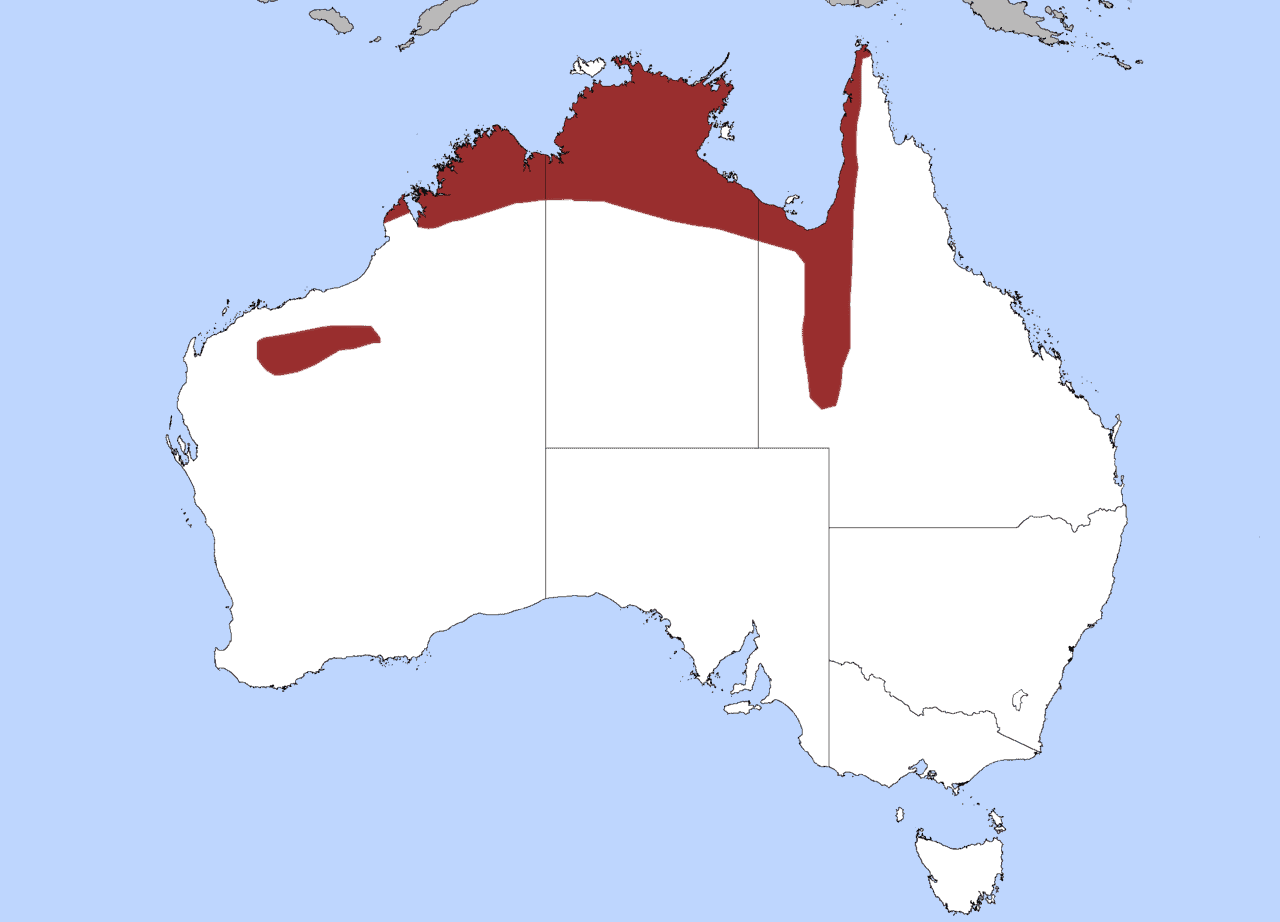
As the map above shows, olive pythons have a divided empire. There’s a huge unbroken stretch in Northern Territory and Queensland, separated from an isolated pocked in Pilbara (Western Australia). This is caused by the Great Sandy Desert, a true desert consisting of red sand dunes and virtually no rainfall. This is too harsh even for snakes to exist in, and creates an impassable barrier. Those in Pilbara have diverged into a separate subspecies: the Pilbara olive python (Liasis olivaceus barroni).
There’s subtle differences, as the Pilbara version has fewer scale rows on its body, but a higher count of ventral (belly) scales at 374 to 410. Pilbara olive pythons also grow slightly larger. Like the main species, they love waterbodies, but also cross rugged, dangerous territory. They often lay their eggs in caves, under handy rock slabs. Olive pythons live on several offshore islands in Pilbara, particularly in the Dampier Archipelago, which consists of 42 islands.
These are the only two olive python subspecies. Other members of the Liasis family include the water python (Liasis fuscus) and Macklot’s python (Liasis mackloti), both found in northern Australia. Originally, the Papuan olive python was a Liasis member, but it now belongs to its own family: Apodora papuana.
| 6 | Great at scaring people |
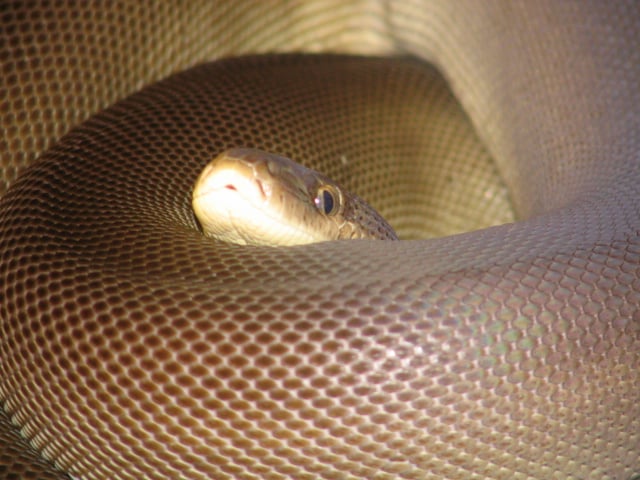
Anyone attempting to live in Northern Territory signs a contract whereby they could meet an olive python at any time, although they may not be aware of this contract.
One incident happened in 2023, in the Gourmet Camp Oven Experience in Kununurra, where visitors dine in full view of the orange Australian outback. The visitors were just leaving, and empty wine bottles were standing on the table, when a curious olive python slithered in. According to owner Josh Melville, it was one of the biggest he’d seen, and it was soon slithering all over the tables. The olive python seemed particularly fascinated by the hanging fairy lights, and it stretched its neck out to take a closer look.
It was a close shave, as the paying guests had departed just 3 minutes before the uninvited olive python arrived. The python then investigated the empty wine bottles and glasses, as though pondering something. Fortunately, there was no danger. The python behaved like the rest of its species: calm, curious, and always investigating things.
| 7 | Easy to feed in captivity |
The olive python’s wild diet consists of 48% mammals, 26% reptiles, and 26% birds, according to data published in 1991. According to this report, they’re relatively easy to feed in captivity, though with a few strange quirks. Laboratory raised rats or adult rabbits are their favourite meals, and these are readily gobbled up. Olive pythons are happy to eat dead prey, whether freshly killed or defrosted. The easiest solution is presenting the prey with tongs, but they’ll also swallow meals left on the terrarium floor.
Birds are a possible prey, but can open up a world of problems. Despite a flexible diet, olive pythons sometimes become fixated on one species and refuse to eat anything else. The report mentioned some olive pythons eating nothing except starlings and sparrows. This was a problem because captive olive pythons tend to grow faster when eating mammals compared to birds – salmonella infections are also a risk with birds. Attempts to scent rodents with bird feathers worked for a while, until the python wizened up to the scheme and realised.
Some olive pythons are plain fussy, and another trick was sticking a small rat to a larger rabbit. The rat-obsessed python ended up eating both meals. They also mentioned binding several rats together, increasing the calorie intake.
| 8 | No desire to hurt humans |
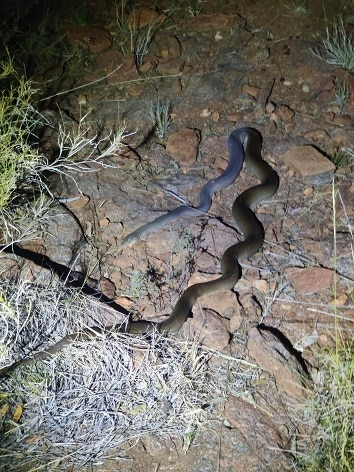
As with most testimonials, the keeper found that olive pythons were a relatively calm species. Juveniles are more nervous, before a gradual calming down with age, that leaves them reluctant to bite. A defensive olive python will coil up and make lunges, but only half-heartedly, with no real wish to harm humans.
The one risk was food. Some olive pythons became way too excited by the prospect of a fresh rabbit being dangled in. Even a slight brush with fingers would activate their hunting instincts, and they would eagerly curl around the keeper’s arm. The larger, thicker individuals were very difficult to remove, with a continuous pulsing grip.
The keeper did identify one trick, as pouring cold water into their mouth tended to dislodge them. This is similar to the rubbing alcohol trick used to make a boa constrictor unwind. That said, olive pythons do have a brutal pair of teeth. If a bite lands, then the wound will be painful, and you’ll probably learn the lesson. Like any species, there can be rogue individuals which are much more aggressive than usual.
| 9 | Brutal male wrestling |
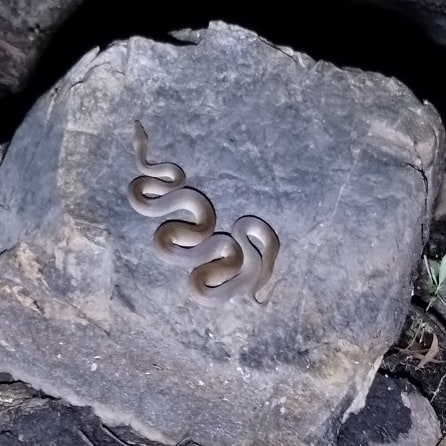
Olive pythons are also a species to use male wrestling, fierce duelling over the right to a nearby female. In the captivity report, the keeper usually paired olive pythons off by introducing a male to a female’s cage in June, when both were equally interested. The female sometimes rejected the male, while in other cases, the male wasn’t interested, and the keeper had to intervene and hijack some of their natural instincts. One of these was wrestling, as when two male olive pythons were introduced to a cage together, they would start making vicious lunges, then attempt to coil round each other.
The winner would suddenly become much more interested in the females, like the glorious victory had awakened their normal wild instincts. But it was a risky strategy, as some weaker enemies would be constricted to death by the enemy, crushed in a 3 metre jail of coils.
Most wrestling snakes rarely land deadly blows. With the California kingsnake, it’s a ritualised contest of attempting to raise one’s head above the other, with their lower bodies finely intertwined, and bites being rare. The machete savane also uses the head raising game. Olive pythons seem far more brutal, killing their male rival, before slithering into the arms of females. Wrestling in olive pythons has also been observed in the wild.
| 10 | Not a prolific egg layer |
Another observation was that adult olive pythons stop feeding completely during winter, while juveniles fed all year round if temperatures were warm enough. During one meal, an olive python can eat several small rats at once. Reproductive females required more food, and ate 15 rabbits per year, while males ate 8-10 rabbits per year.
It was found that the less a female reproduces, the larger she grows, often becoming obese and exceeding 4 metres. Prolific egg layers devote more energy to those eggs, and are intermediate in length. The keeper successfully used muttonbird oil as a dietary supplement.
Meanwhile, out of 12 egg clutches laid, 9 were laid in September. One batch was laid in August, October and November apiece. In the days before laying eggs, the female became highly reclusive, staying in her hide box and refusing to leave. Finally the eggs arrived. Despite the olive python’s jumbo length of 4 metres, this is only a moderate egg layer, unlike the Burmese python, where a nest of 111 has been discovered. The numbers range from 12 to 40, but 13 to 20 is more typical. The eggs adhere together, with a natural stickiness, and the average egg clump was the size of a football. In the wild, males can travel several kilometres after detecting a female’s scent.
